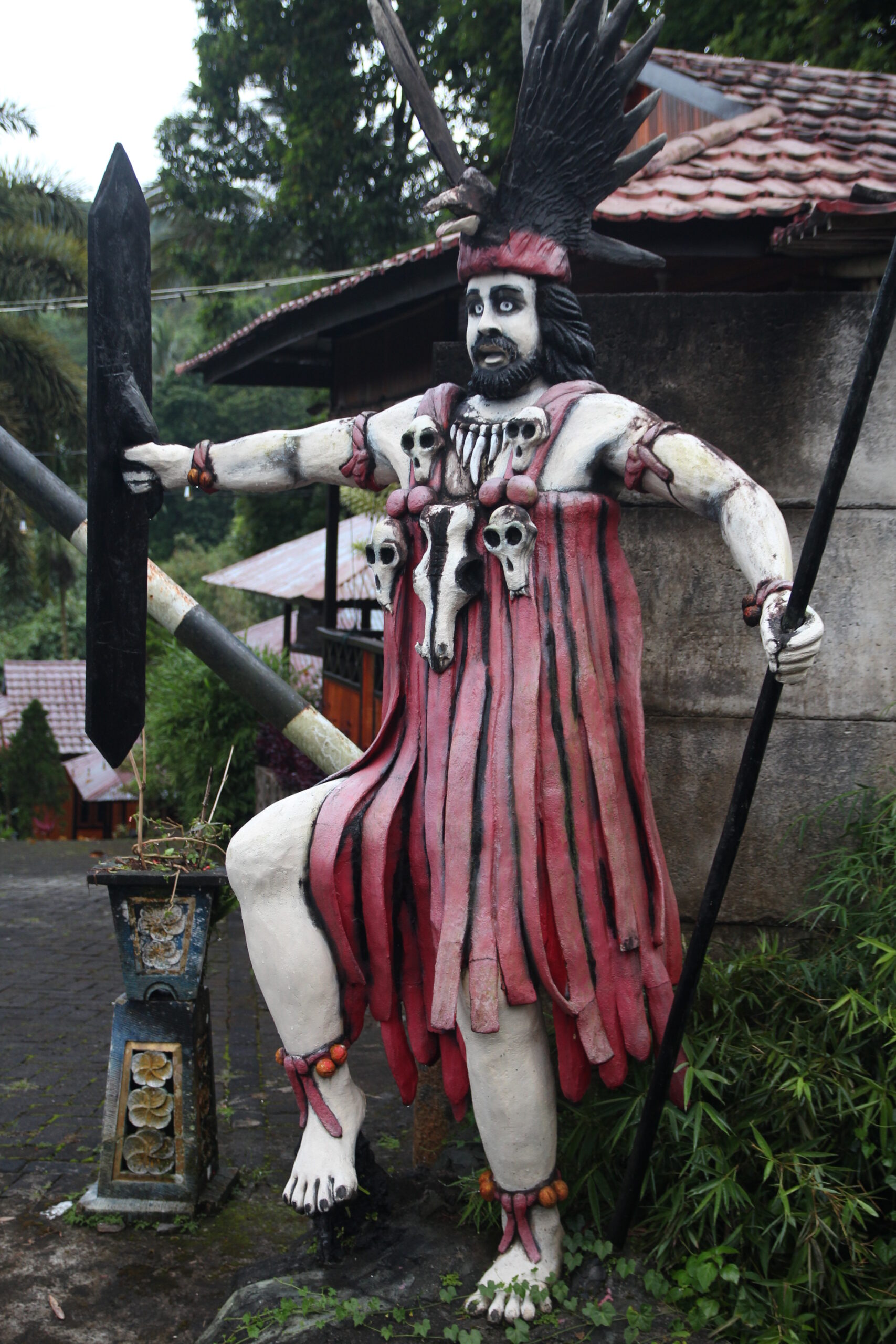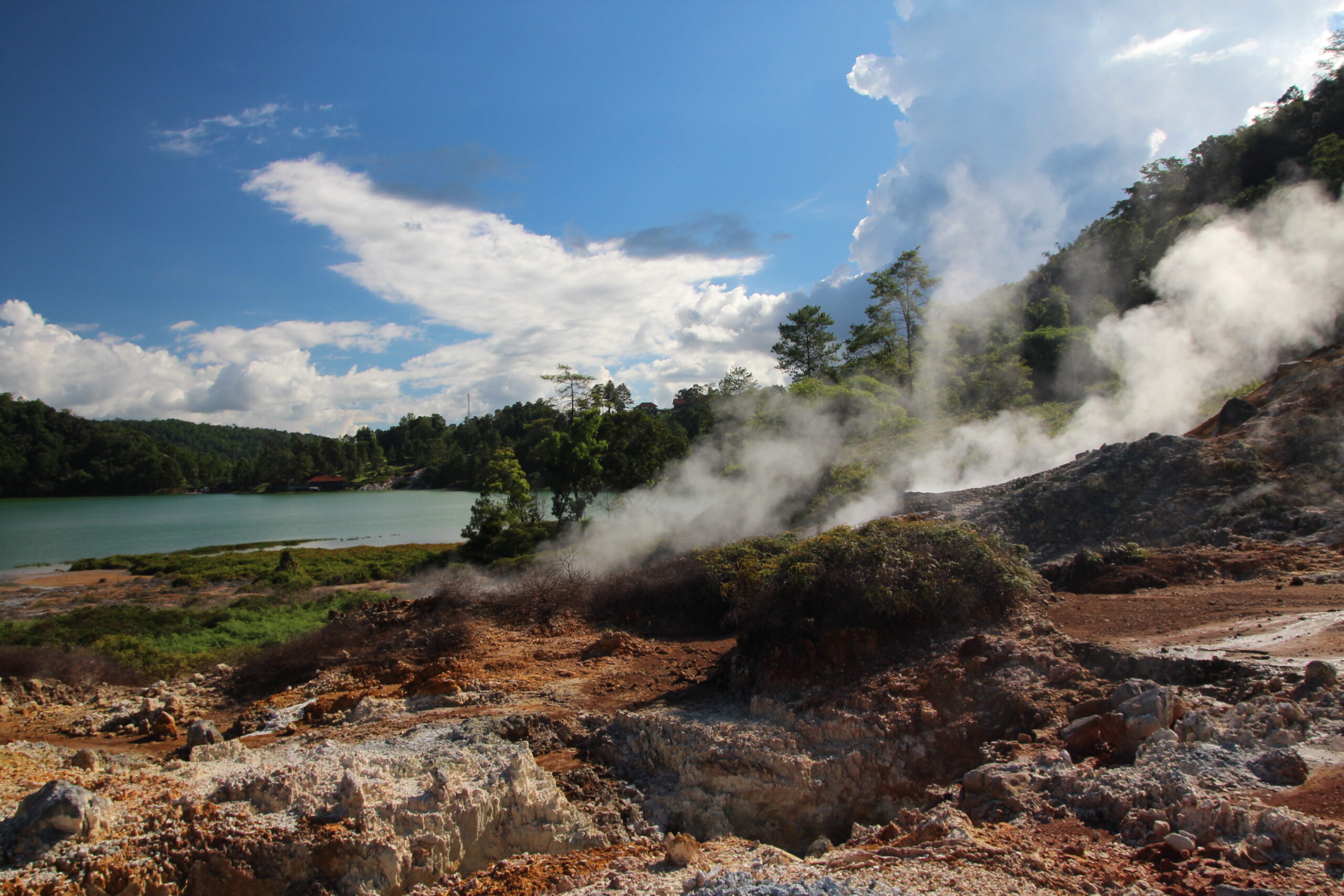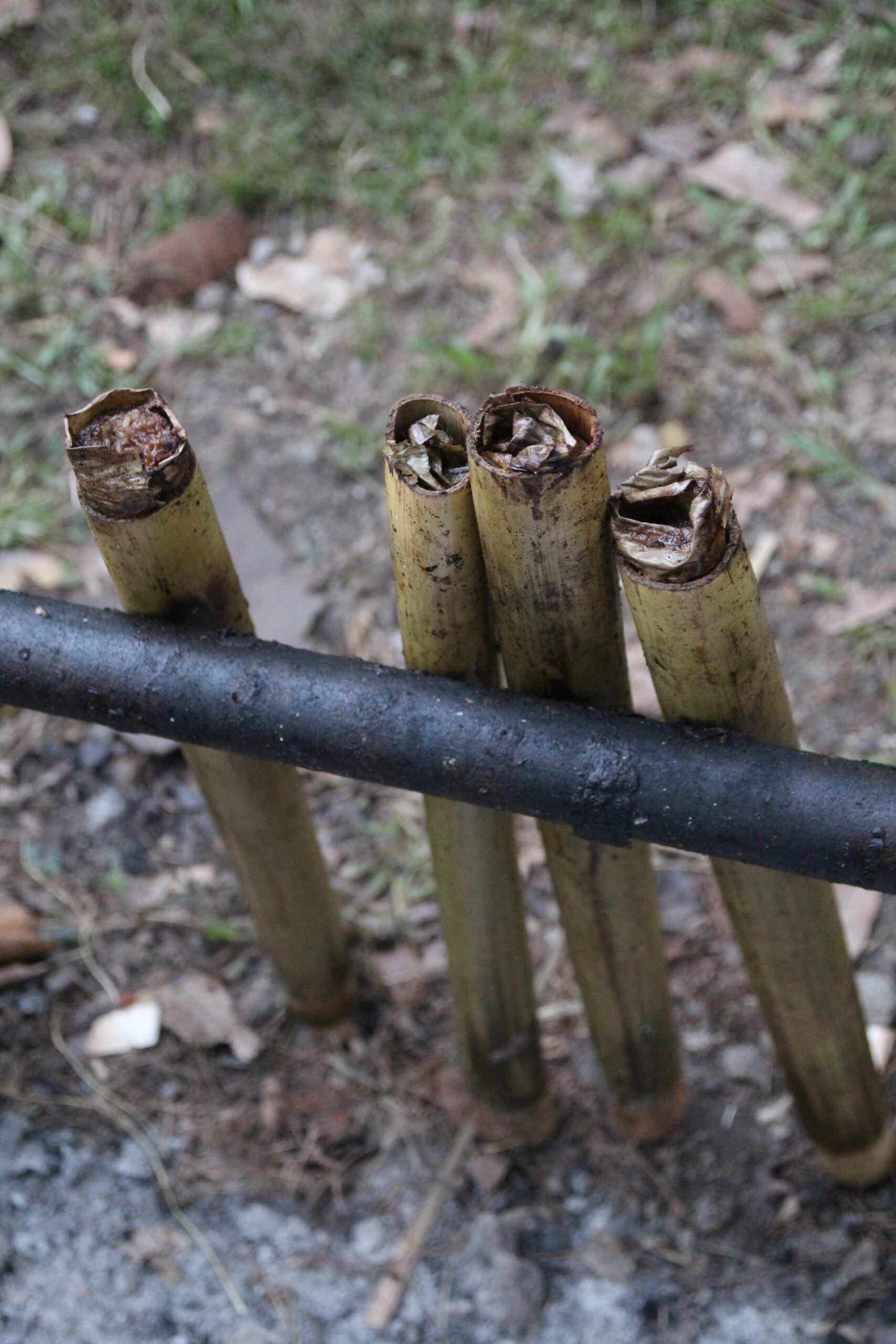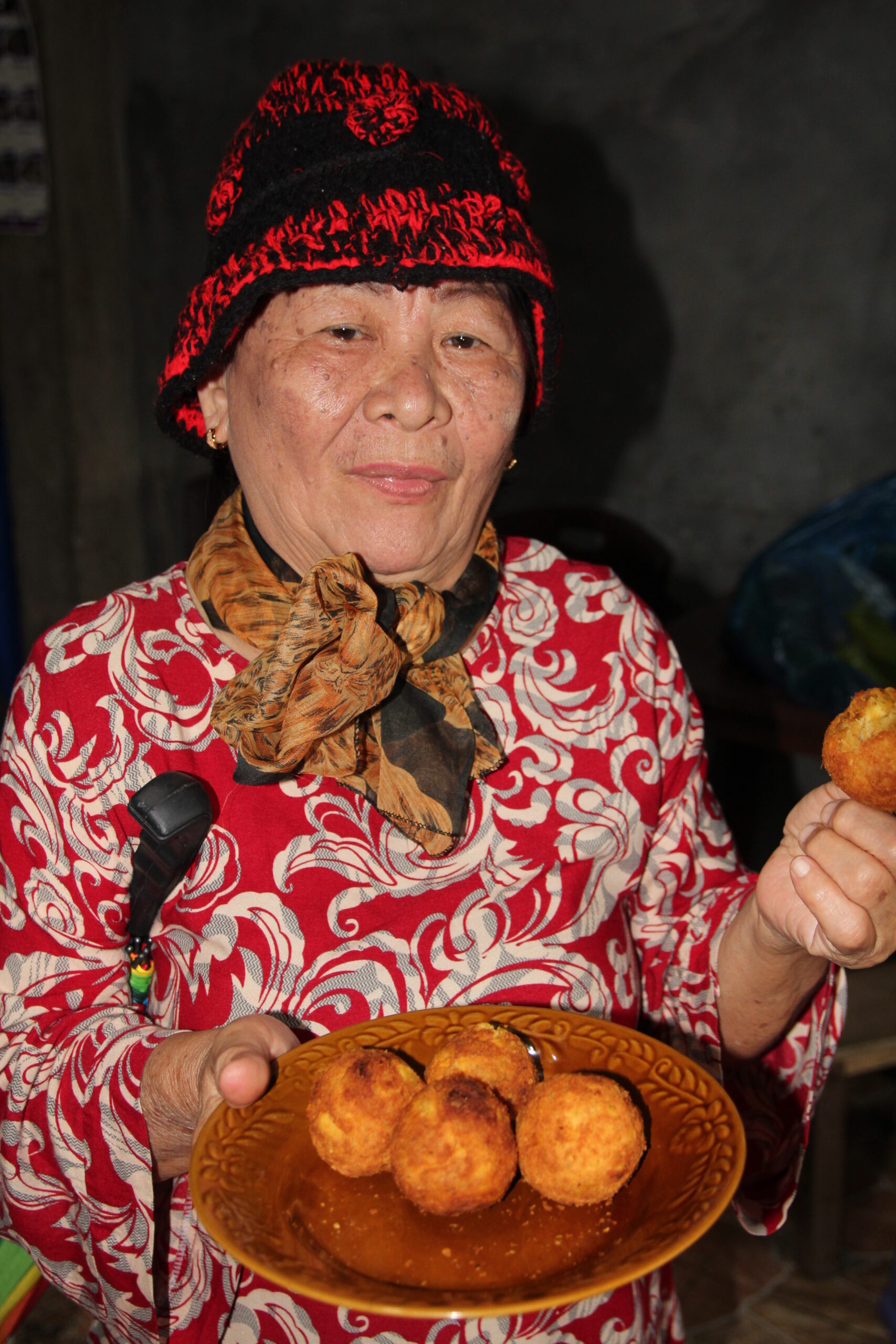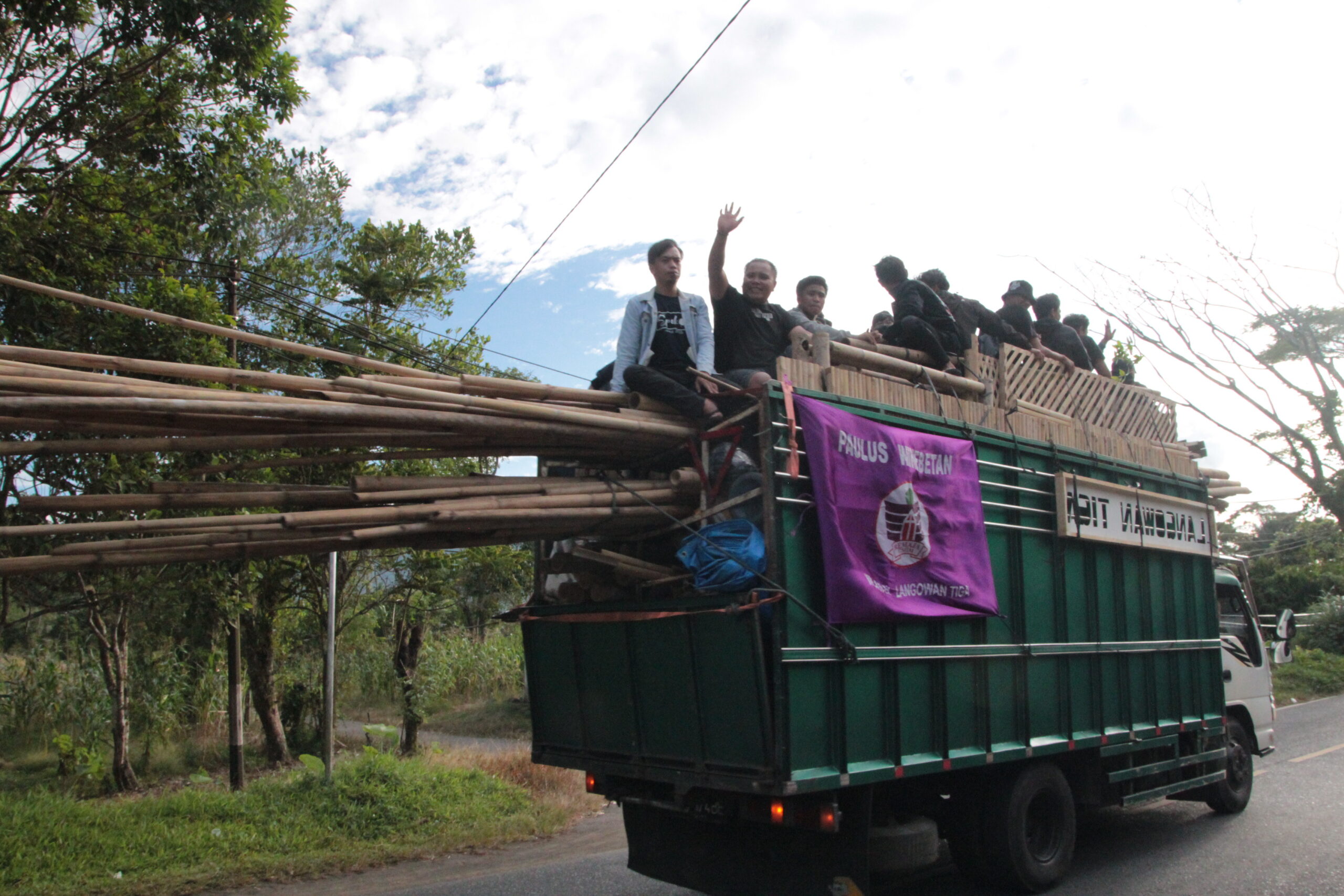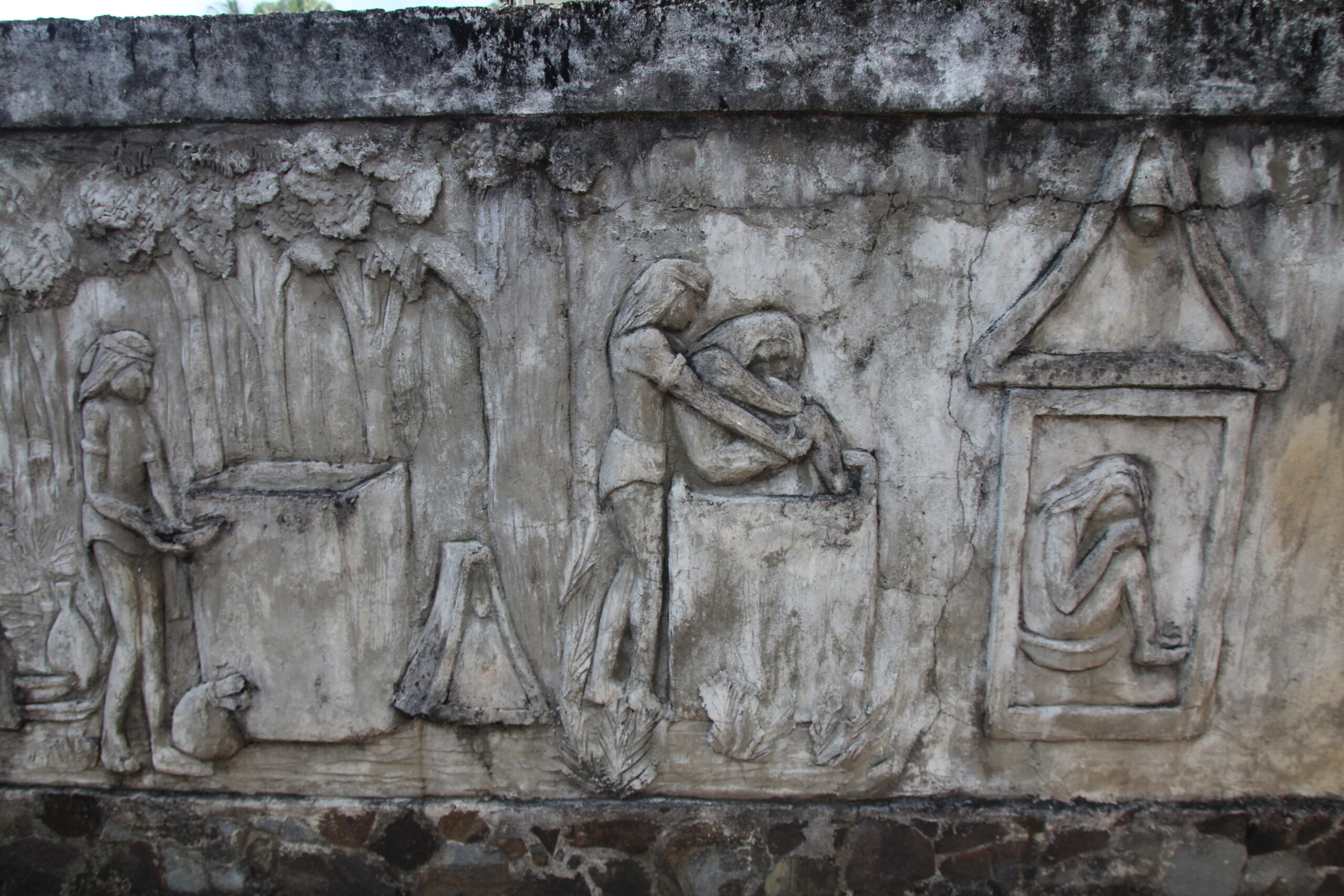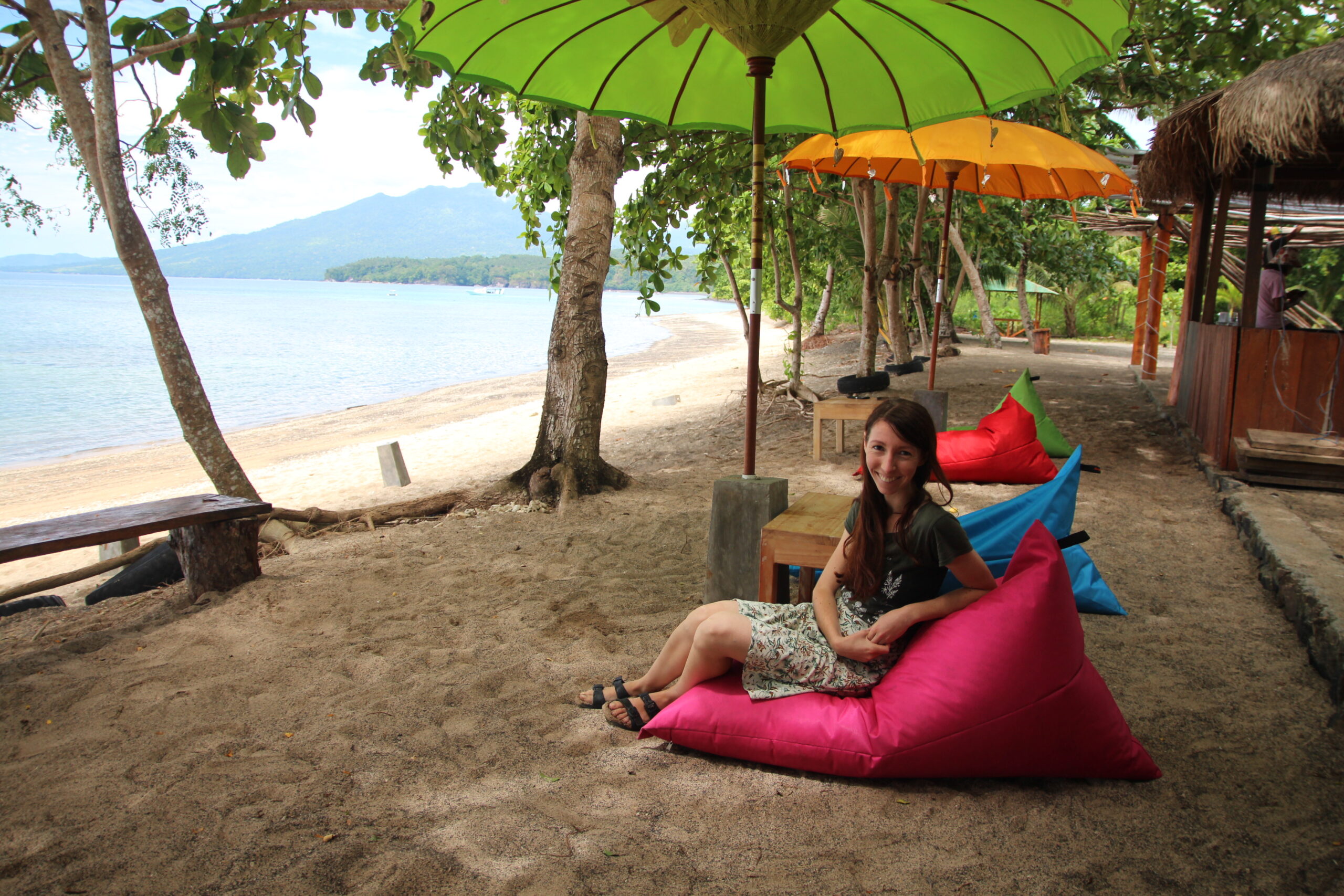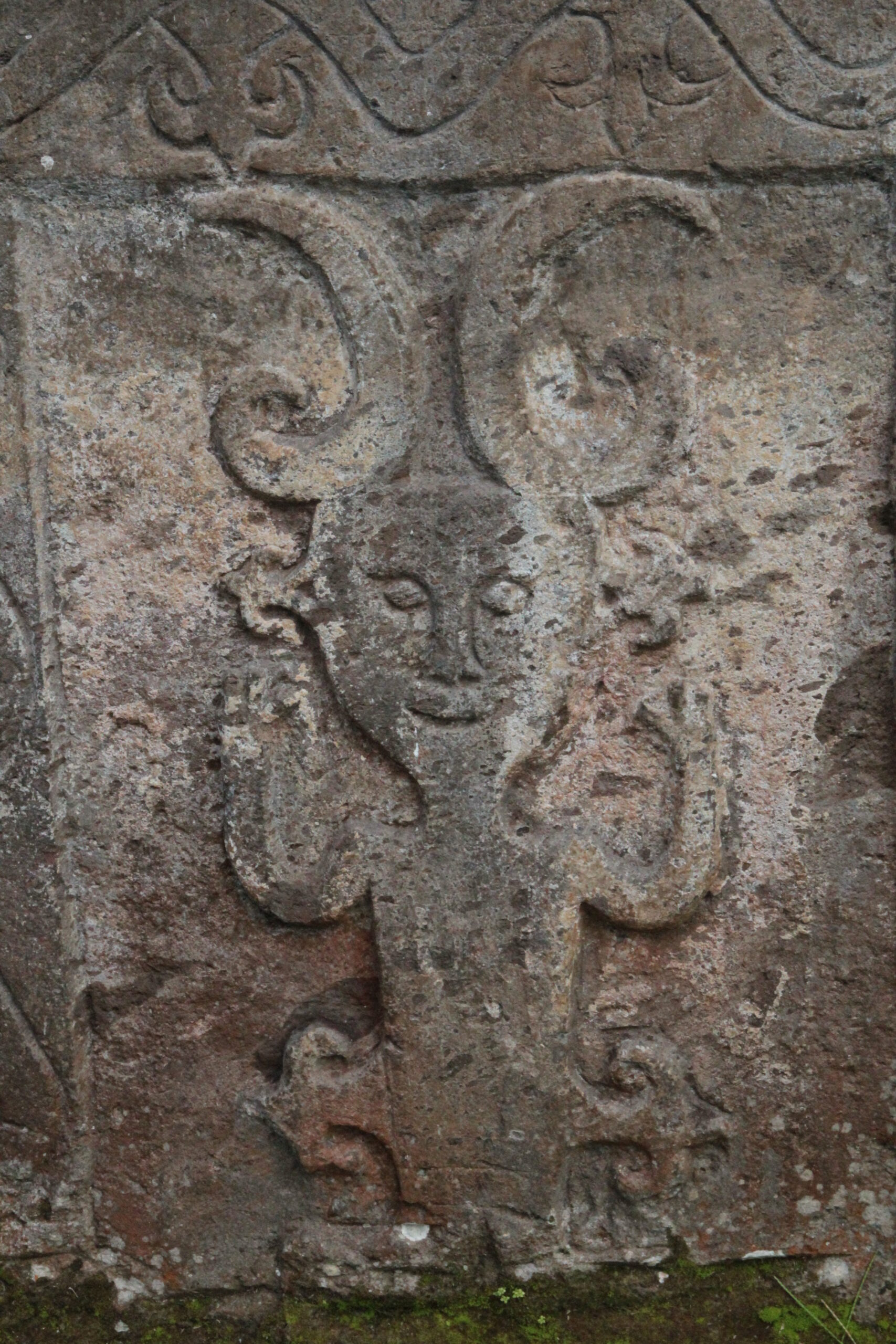Észak-Sulawesi
extreme cuisine and volcanoesNorthern Sulawesi is mainly known for its world-class scuba diving spots, but if you make the effort to leave behind Manado, the “capital” of the north and the coastline, you will be rewarded with a unique cultural experience. So just head into the highlands!
The mountainous area south of Manado is known as the Minahasa Highlands, which received its name from the Minahasan people, a native ethnic group.
Minahasan are of austronesian origin and were divided into clans, who were fighting with each other in the past. A reminder of this period is the Kabasaran, the local martial art and war dance, which is performed in blood-red costumes decorated with animal skulls. As a result of these conflicts, the Minahasan are also diverse linguistically with five different languages spoken in the region.
Another peculiarity is the Minahasan cuisine, which is also described as extreme by many because of the exotic meats and impressive amount of chili they use.
During colonial times, Minahasan adopted Christianity and as a result, North Sulawesi, unlike most parts of Indonesia, is predominantly Christian.

In the past, Minahasan warriors used to decorate their dresses with various animal skulls.
Minahasa highlands
The best place to learn about Minahasan culture is Tomohon and the surroundings of Tondano Lake. In the area, you can see many of the traditional Minahasan wooden houses and old stone sarcophagi (Waruga). In Sawangan village there is also an archeological park with a huge number of Warugas with the oldest ones dating back to 900AD.
The Warugas were carved out of a single piece of stone and served as a resting place for the whole family. I was explained when I visited the place, that the Waruga used to be carved out by the local men and had to be completed before they got married.
In Tomohon itself you can visit the local museum, the “extreme food market”, the handicraft market, Linow Lake with hot springs and fumaroles around it, and just a few km away from the center, the crater of Mahawu Volcano.
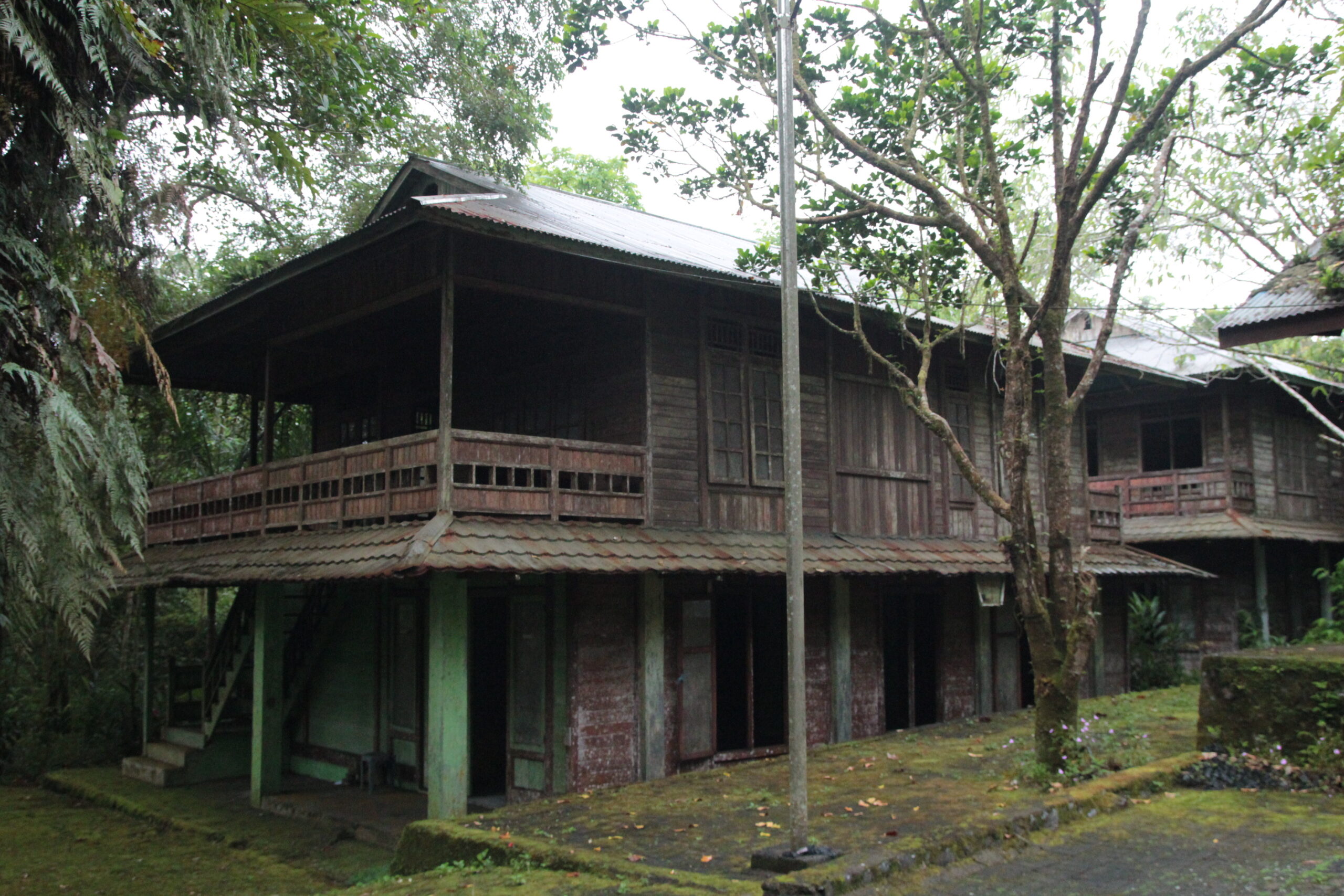
Minahasan-stlyle wooden house

The archeological park in Sawangan village
Minahasan Cuisine
Traditionally, Minahasan used to eat literally anything that moves! Apart from the usual meat sources, dog meat is also an everyday part of the menu, and exotic animals, like bats, snakes, and forest rats are also consumed. Monkeys also used to be eaten, but the government already banned that. The “extreme market” in Tomohon is the best place to get an idea about the meat-eating habits of Minahasan, where you will see all these creatures on sale.
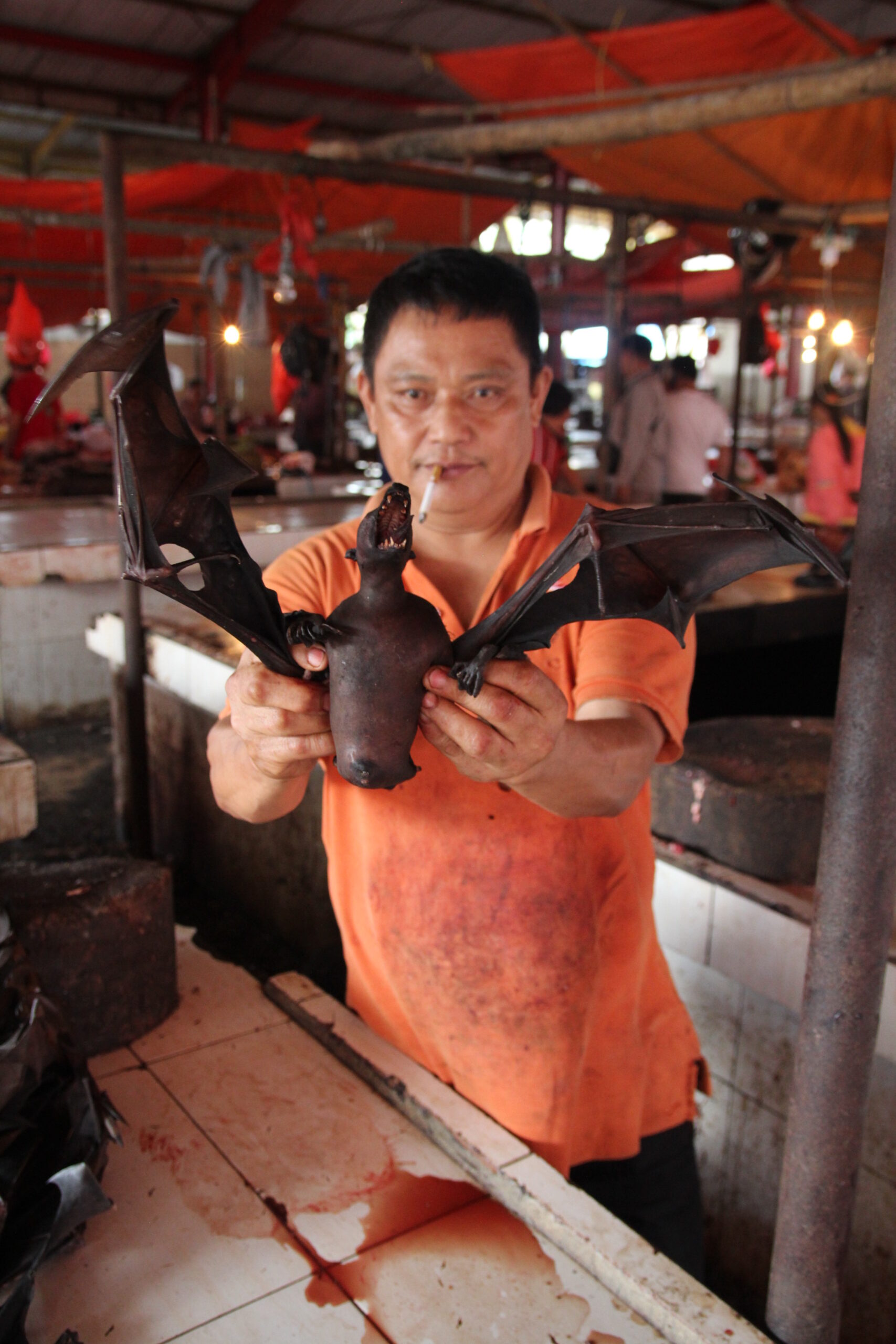
Bats are also a delicacy in Minahasan cuisine
Still, there are also enough recipes based on less questionable ingredients in the local cuisine, including smoked skipjack tuna and other seafood, various vegetables, and Papaya flower buds. It is also important to note, that Minahasan cuisine is extremely spicy, even for Indonesian standards!
Minahasan desserts are also interesting. As Dutch influence from the colonial times, you can find many European-style pastries, but there are also some local recipes to try out. My favorites were Koyabu, pandan leaves stuffed with a mix of rice flour, coconut, and brown sugar. Another nice one was Dodol, a similar recipe where a jelly from coconut and palm sugar is filled in leaves.


Hot springs, fumaroles and hot lakes
The Minahasa highlands are dotted with active volcanoes and thanks to this geothermal activity, the area is full of hot springs! The best places for dipping into a hot spring are beside Lake Linow and around Tondano.
Linow Lake also has a geothermal area with boiling mud pools and sulfuric fumaroles at its shores. This area has a very interesting atmosphere with smoke and vapor all around it! Keep in mind, that there are no secured trails there, so if you happen to step on an unstable, hot point, you can get a serious burn!
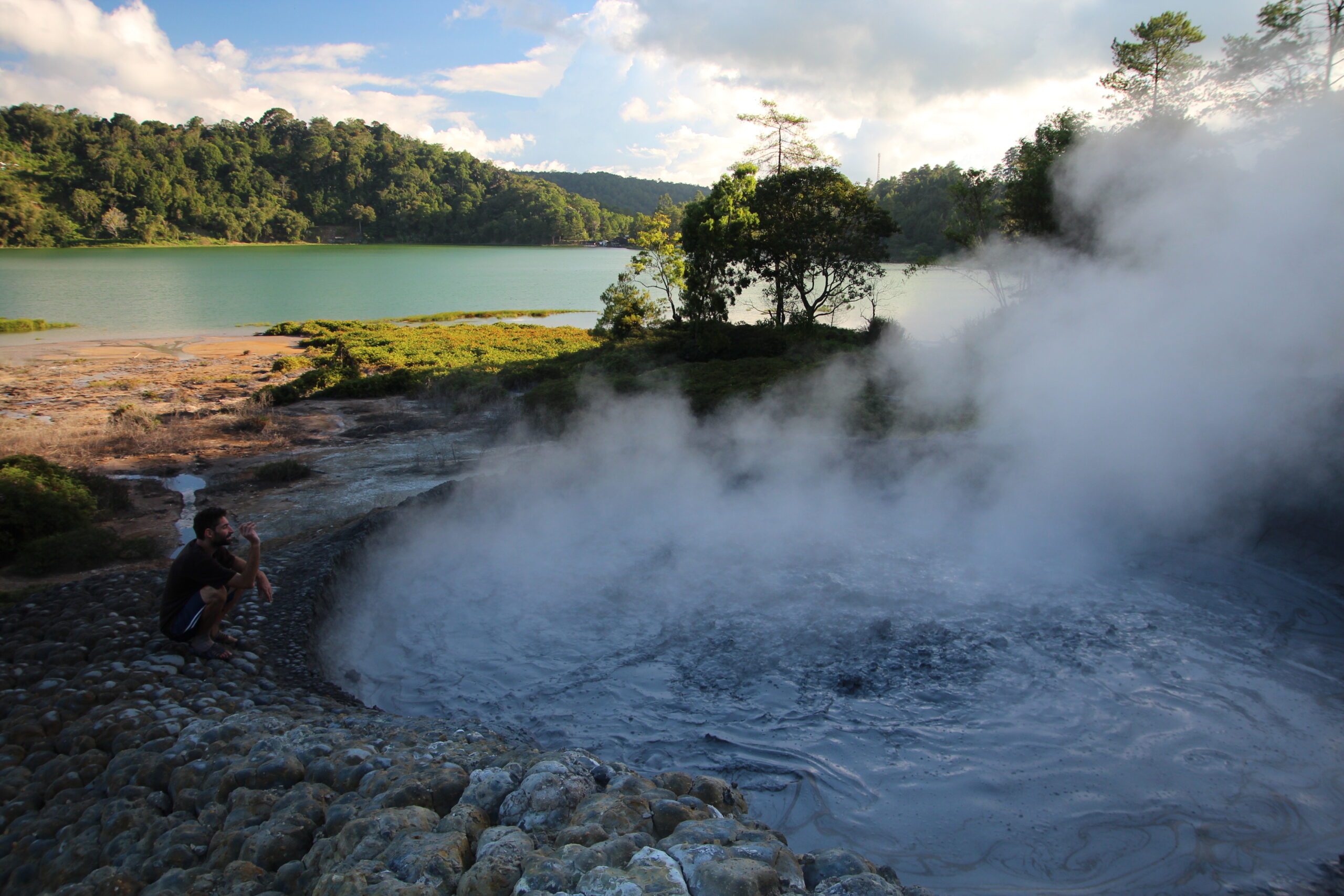
A boiling mud pool at Linow Lake
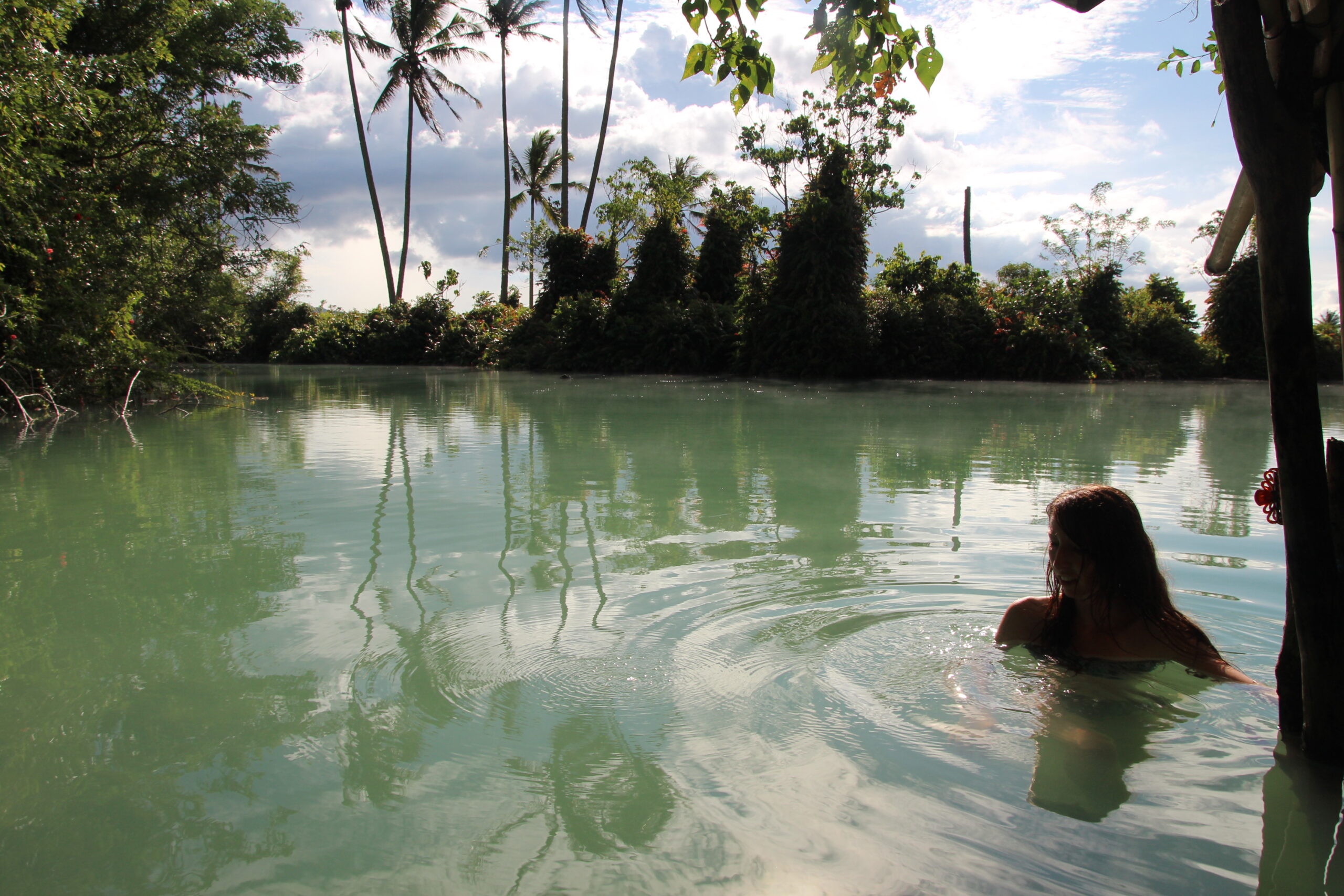
Bathing in a hot lake at Ranolewo
Another fantastic place is the area around Ranolewo. There are 2 hot lakes beside the village, one of them is over 50°-60° Celsius and through that simply too hot even to put your hand inside. The second one is around 40° Celsius and is a great place to bathe. You have to take care though, as there are some “hot spots” in it, where temperatures are higher.
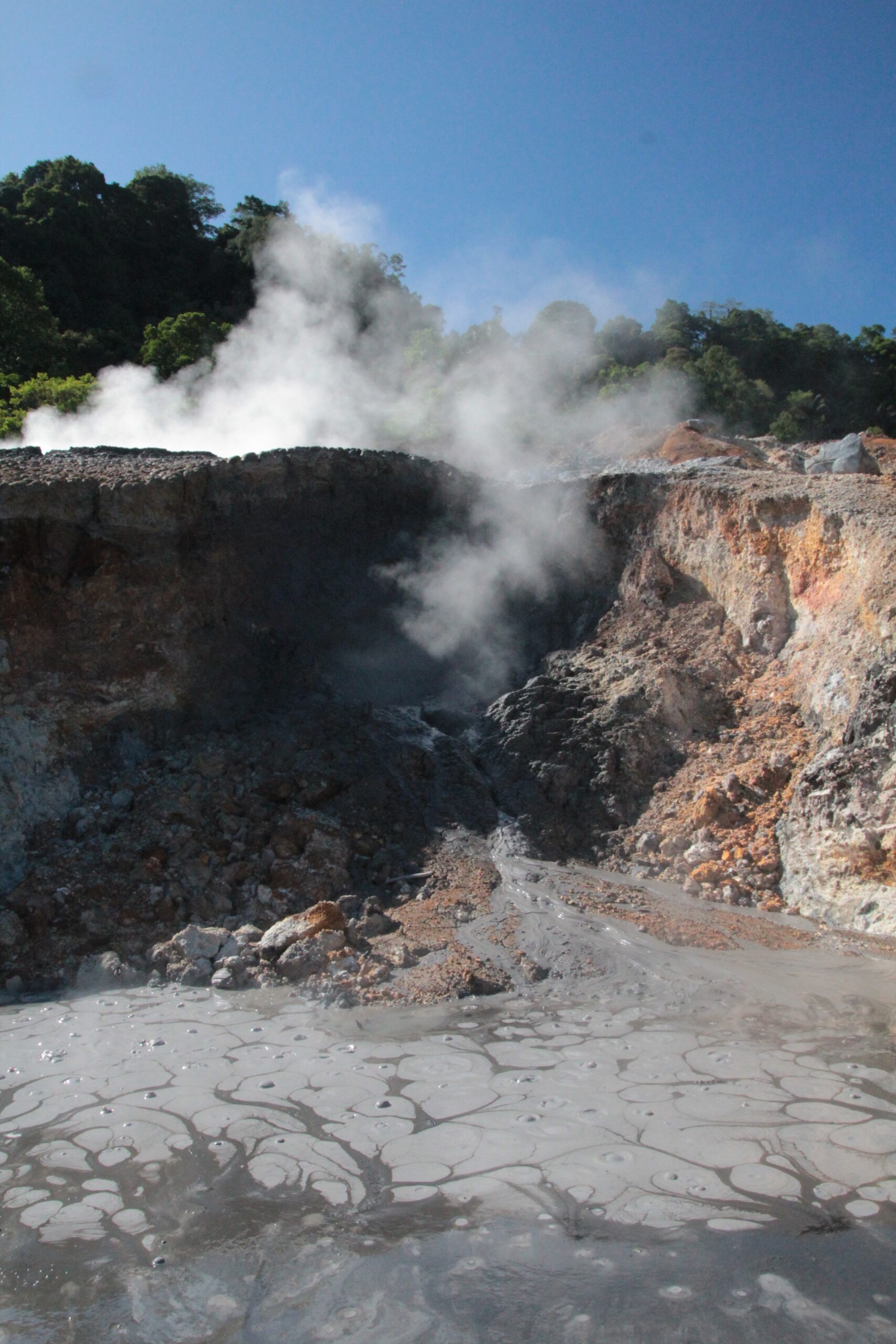
Tangkoko National Park
This national park is another place, that I would really recommend visiting. The park is home to a large number of endemic species, including the Celebes crested macaque, hornbill, bear cuscus, and the spectral tarsier.
The superstar number one of the park is the tarsiers, they are the most important reason why the park is receiving so many visitors. They look amazingly cute and they can melt your heart with their huge eyes.
Tarsiers are nocturnal creatures, they have their favorite trees where they rest in holes during the day and they wake up first around sunset.
The national park also has some nice, black sand beaches around it, which are also worth to be visited.

Black sand beach at the national park

Tarsiers waking up in their hiding place
Fotógeléria
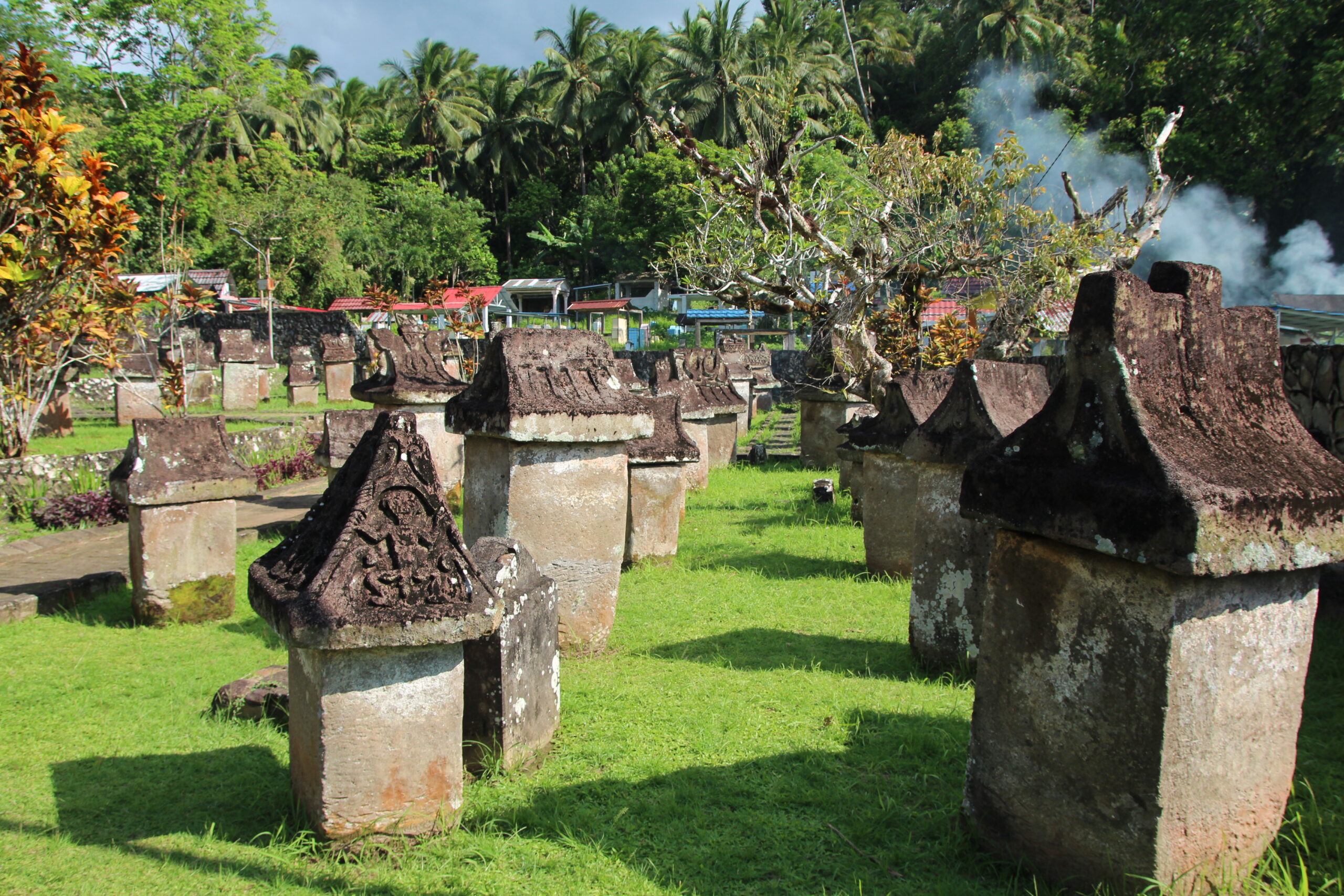
Archeological park near Sawangan
Dog meat at the Tomohon extrem market
Statue depicting a Minahasan warrior
Fumarole at Linow lake
Traditional recipe from Sulawesi: meat, rice, and spices stuffed in a bamboo stick and grilled on fire
My host with Binyolos (traditional fried sweet potato balls)
A very well-packed truck
Local kids in Gorontalo province
A carving depicting Waruga burials
This happens when you arrive at a village in Sulawesi out of the tourist route: everybody wants a picture/video of you/with you and you´re treated like a superstar
At Kenjiro Beach on the north-eastern coast
Bats on sale at the extreme market
Smoked skipjack tuna
Stone carving on one of the Warugas

